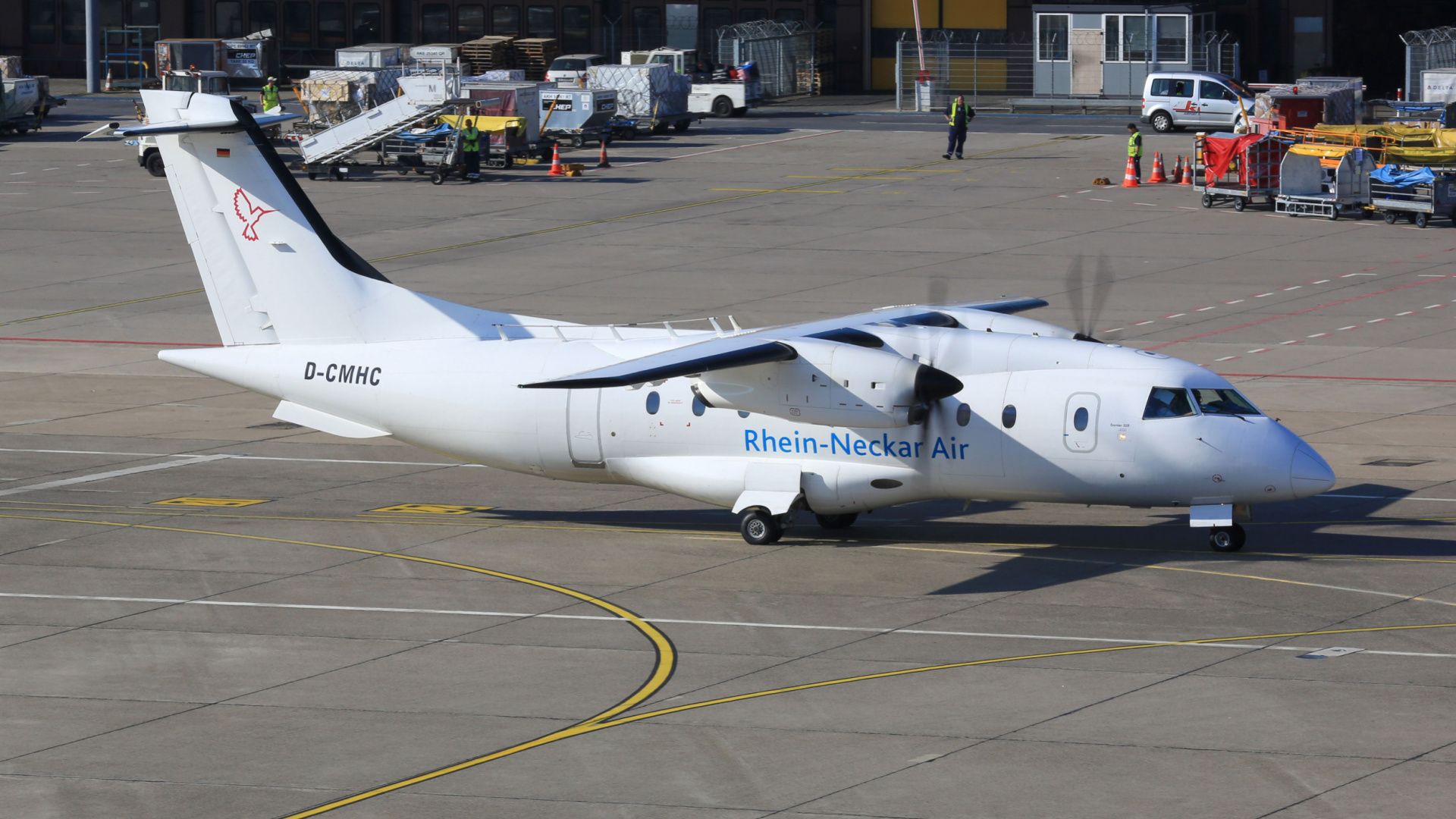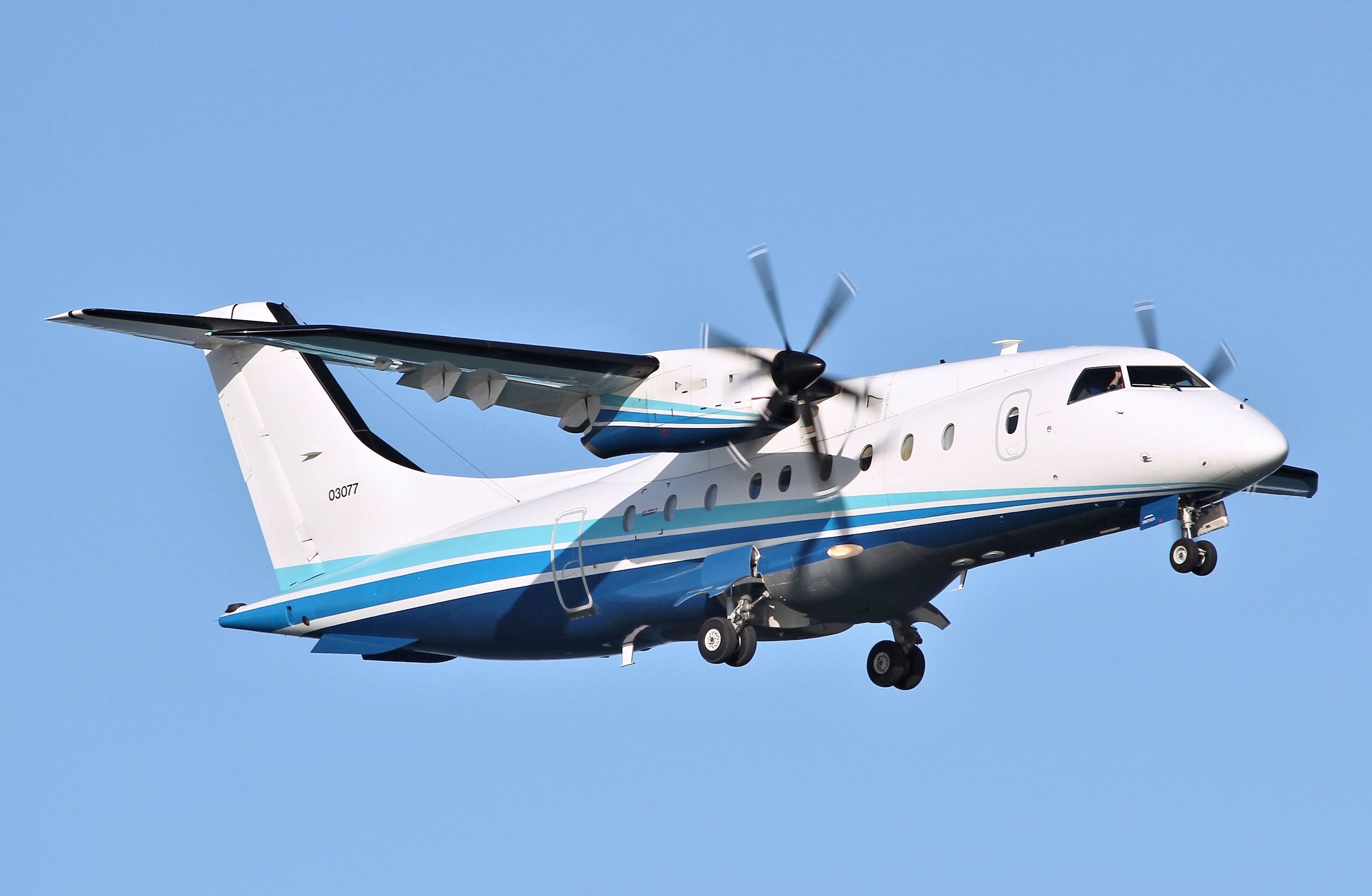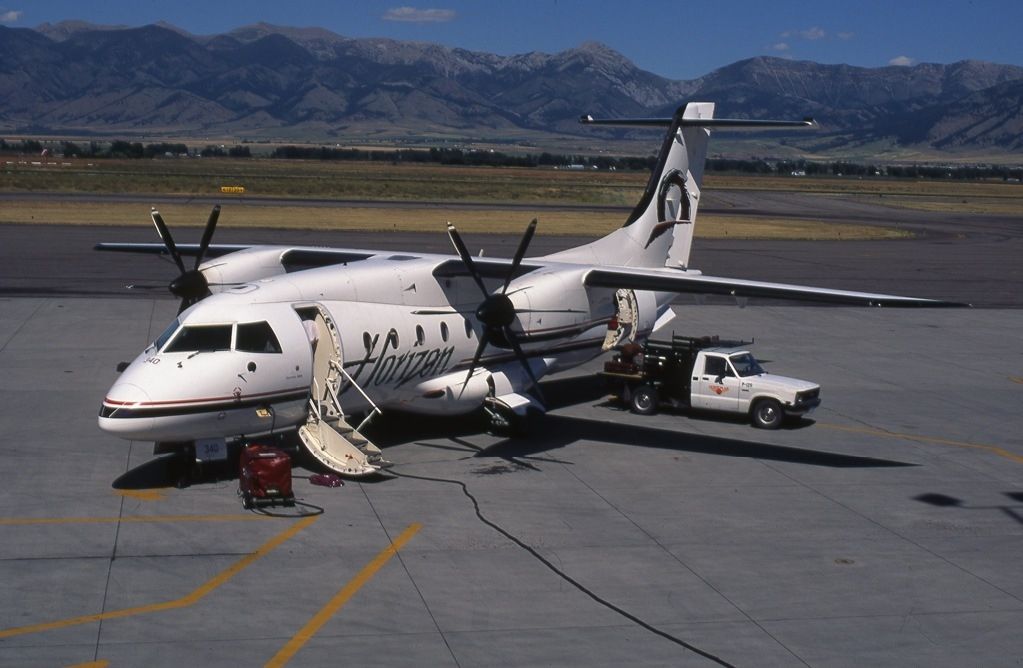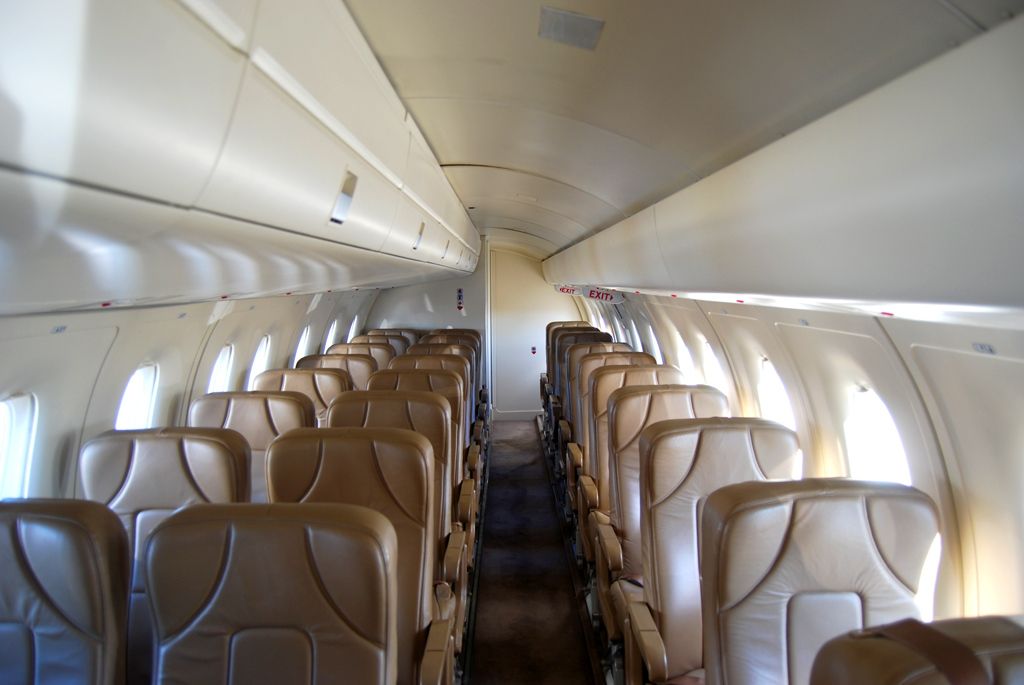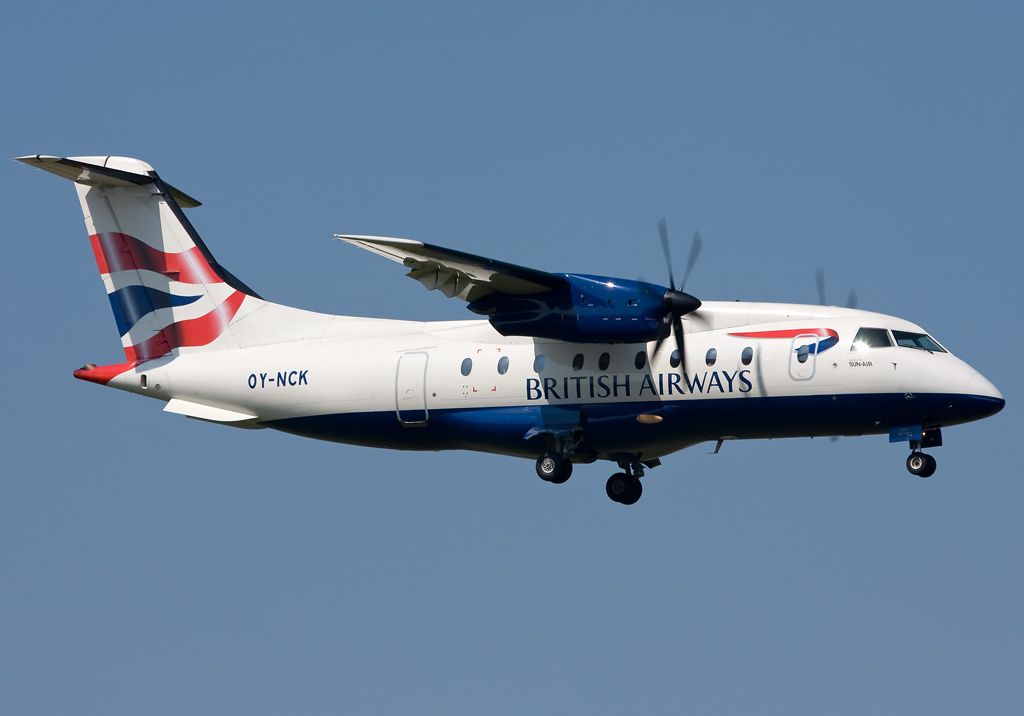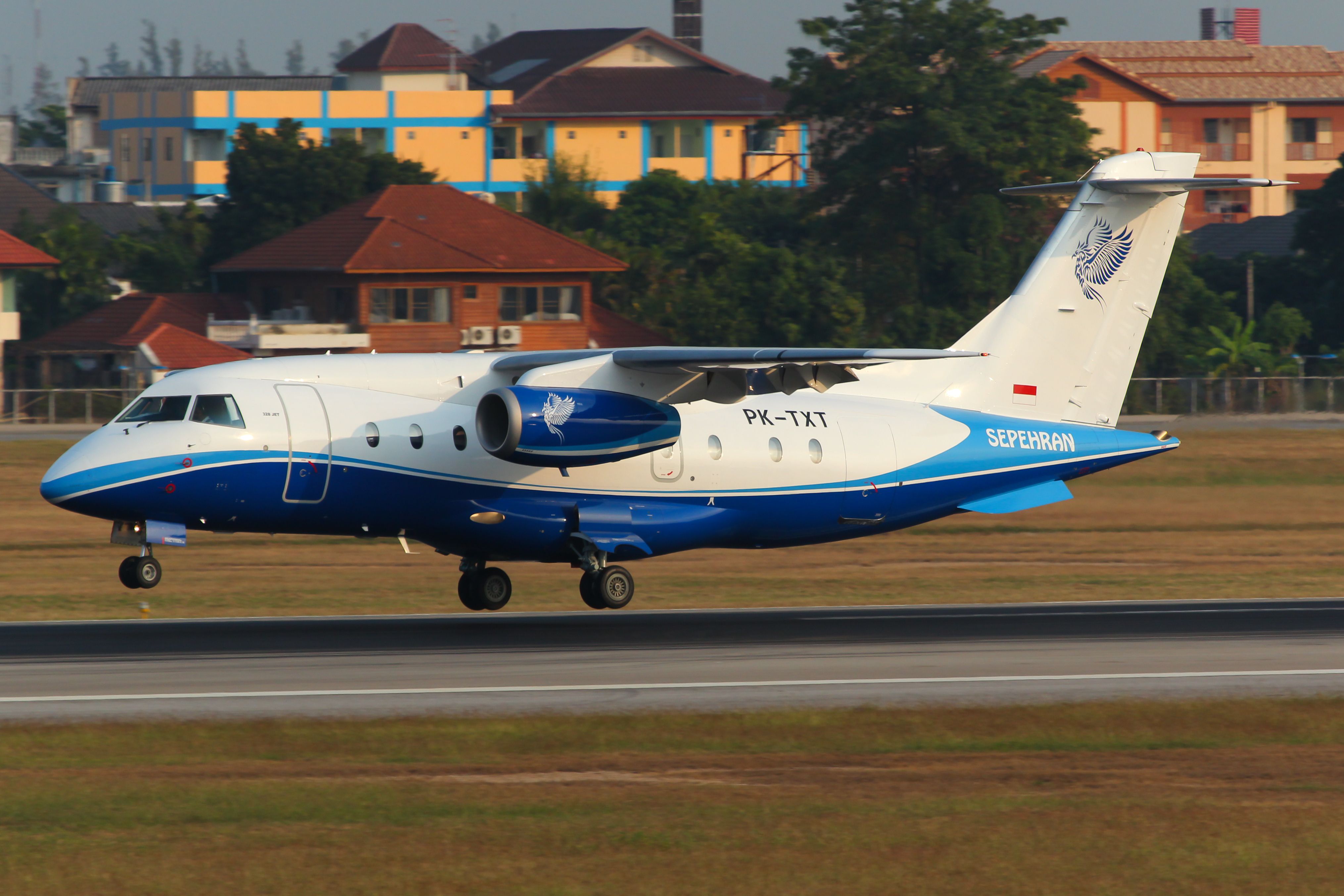The Dornier 328 made its first flight in 1991. This German-designed turboprop-powered commuter airliner enjoyed a nine-year production cycle that resulted in the completion of 217 aircraft. A jet-powered version of the type entered service in the late 1990s. Going forward, it may even be a gateway to emission-free flying.
A product of the 1980s
The story of the Dornier 328 dates back a little further than the 32 years since its first flight, namely to the mid-1980s. This was when research conducted by Deutsche Aerospace, Dornier’s then-owners, suggested that airlines would be keen to fly a 30-seat commuter airliner. Alongside this specification, speed and quietness were also key considerations. It devised an optimistic sales target of 400 units.
Negotiations between Dornier and Daimler Benz resulted in the 328 program being approved in 1988. After extensive studies into engines and instrumentation, Dornier chose to fit the aircraft with Pratt & Whitney Canada PW119 turboprops and a glass cockpit.
Taking to the skies
As Dornier continued to develop the 328 series, it began receiving orders before the aircraft had taken to the skies. Among the most significant of these was a 35-aircraft order from US regional carrier Horizon Air, which now operates feeder flights for Alaska Airlines. Horizon placed this order in May 1991, and the 328 made its first flight on December 6th that year.
Less than six months later, June 4th, 1992, saw the second Dornier 328 prototype take to the skies for the first time. The type’s testing program wasn’t flawless, with one prototype suffering a propeller failure whereby all six blades detached, puncturing the fuselage. After a testing program that lasted nearly two years, the Dornier 328 finally entered service in October 1993. The aircraft entered a competitive market for small turboprop airliners at the time.
Statistics and performance
As far as the Dornier 328’s dimensions are concerned, the aircraft is one of the world’s smallest airliners. It is just 21.23 meters (69 feet 8 inches) long. Its wingspan is a little smaller still, clocking in at just 20.98 meters (68 feet 10 inches). The aircraft typically seats 30-33 economy class passengers.
Using data for the 328-110 version, which had a greater range and maximum takeoff weight (MTOW) than the standard 328-100, its maximum takeoff weight is 13,990 kg. Regarding its performance, the aircraft’s PW119B turboprops enable a typical cruising speed of 330 knots (620 km/h). Its range is around 1,000 nautical miles (1,852 kilometers),
A recession hindered sales of the type in its later years of production, with both Dornier itself and the 328 series proving to be loss-making enterprises. It failed to hit the sales target of 400 units, with 217 ultimately being produced between 1991 and 2000. While Dornier had also envisioned a stretched 48-seat version, and demand was there for it, this never came to fruition.
Dornier 328 turboprop operators
While production of the Dornier 328 turboprop ceased more than two decades ago, many aircraft remain in service today. Most aircraft previously operated with regional airlines around the world. In the United States, operators included United Express, Horizon Air, Air Wisconsin, Lone Star Airlines, and PSA Airlines. In Europe, it operated in several countries, including Germany, Iceland, and Scandinavia (as SUN-AIR and pictured below in British Airways livery).
Regarding aircraft still in service today, there are 42 of the type operating for 11 civilian and military operators. The largest of these is the US Air Force, still operating 21 aircraft. Central Mountain Air in Canada still operates three aircraft. Fourteen aircraft are used for charter service in Germany (nine with operator Private Wings and five with MHS Aviation). There are a few charter aircraft in Iceland and the Netherlands. In other regions, five aircraft operate charter in Nigeria, one each in Australia, Botswana, and Indonesia.
A jet-powered counterpart
Later in the 1990s, Dornier also began producing a version of its 328 that it powered with Pratt & Whitney Canada PW306B turbofans. Originally known as the 328-300, this aircraft now carries the ‘328JET’ designation. It first flew in 1998, and 110 examples were produced between 1996 and 2002. Eighteen examples remain active today at ten operators worldwide. This includes SUN-AIR in Scandinavia.
Photo: Sudpoth Sirirattanasakul | Shutterstock
The aircraft’s full name is actually the Fairchild-Dornier 328JET. This designation reflects Dornier’s acquisition by US aerospace company Fairchild during its early development. A 44-seat stretched-fuselage proposal known as the 428Jet was announced in May 1998 but subsequently canceled in August 2000. Dornier eventually went bankrupt in April 2002.
The 328JET is seeing new life with sustainable operations. Deutsche Aircraft launched the D328eco program in 2020. The aircraft can operate using 100% SAF, and the aircraft’s manufacturer is working with Pratt & Whitney Canada on new propulsion technology involving SAF and hydrogen.
What do you make of the Dornier 328? Have you ever flown on one or one of its jet-powered counterparts? Let us know your thoughts and experiences in the comments section below.
Sources: ch-aviaiton.com
